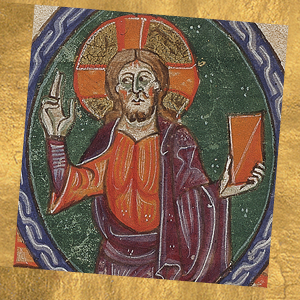St. Francis of Paola , Hermit, founder of the Order of Minims

He was born in Paola, now province of Cosenza, on 27 March 1416. Afflicted as a child by a severe infection of one eye, his parents entrusted him to the intercession of Francis of Assisi: if he recovered, he would wear the Franciscan habit for a whole year. After his recovering, when he was 15 years old he entered the convent of St. Marco Argentano (Cosenza) in oder to fulfill the vow made by his parents. There, he immediately showed his inclination to prayer and his powerful gifts of piety, along with some supernatural manifestations. At the end of his stay at the convent, he undertook a pilgrimage with his parents in search of the most suitable religious life for him. He went to Assisi, Montecassino, Rome, Loreto and Monte Luco. In Rome he was troubled by the opulence of the papal court and commented: "Our Lord was not like that". This was the first sign of his reforming soul.
Hermit
Back in Paola, he began a period of hermit life in an inaccessible place owned by his family. Gradually other people joined Francis, regarding him as a spiritual leader. Francis and his companions built a chapel and three dormitories. They received diocesan approval in 1452 to establish an oratory, a monastery and a church. Even the nobility of Paola, enthusiastic about Francis' experience, helped as simple workers in the construction of the buildings.
Papal Approvals
Francis' reputation for holiness spread rapidly: in 1467 Pope Paul II sent one of his emissaries to Paola for news of the hermit. After presenting his report on the monastery, the papal legate himself decided to join the community.
On 17 May 1474, Pope Sixtus IV officially recognized the new order with the name of the Hermits of St. Francis of Assisi. The rule was formally approved by Pope Alexander VI, who changed their name into the Minims.
The cloak on the sea
Loved and sought after as a spiritual guide, Francis was also considered the only authority able to oppose the abuses of the Aragonese court in the kingdom of Naples, standing at the side of the poor.
Some prodigious facts were attributed to him. In 1464, a year of severe famine, some workers were on their way to the plain of Terranova to find work. In Galatro (Reggio Calabria) they came upon Saint Francis heading for Sicily. He asked them for some bread but they themselves were hungry and without anything to eat. Then Francis said: "Give me your saddlebags, for there is bread inside". And so it was. In their bags the workmen found hot and steamy white bread. And the more they ate, the more it grew.
According to another story, a boatman refused to take Francis and his companions to Sicily. The saint then spread his cloak on the water so that they could cross the strait. Another "charisma" attributed to the hermit was the gift of prophecy, as when he foresaw the fall of the city of Otranto into the hands of the Turks in 1480 and its subsequent reconquest by the king of Naples.
From the hermitage to the court
Brought by Neapolitan merchants, the fame of Francis arrived in France at the court of Louis XI, who was ill at the time and who asked Pope Sixtus IV to bring the hermit to his bedside. Both the Pope and the King of Naples saw in this invitation the possibility of political advantages. Francis, however, obeyed the papal imposition with difficulty: he was used to his hermitage and would reluctantly adapt to court life. On his arrival, King Louis XI knelt at his feet; although he never recovered, the action of the hermit at court led to good relations between the papacy and the French monarchy. Francis was approached by common people as well as by academics in search of spiritual guidance. He lived in France for 25 years, working the land as a peasant and increasing his reputation as a reformer and a penitent. Through the aggregation of some Benedictines and Franciscans, his Calabrian congregation abandoned the hermit life for the cenobitic one, leading to the foundation of the secular Third Order and to that of the Nuns. Their respective rules were definitively approved by Julius II on 28 July 1506.
Death and canonization
Francis died in Tours on 2 April 1507. His fame soon spread through Europe thanks to the three branches of the family of the Minims (friars, nuns and the third order). He was canonized on 1 May 1519, only twelve years after his death, during the pontificate of Pope Leo X, to whom he had predicted his election to the papal throne when he was still a child. On 13 April 1562, some Huguenots forced his tomb and on finding his body uncorrupted set it on fire. The few remaining relics are kept in various convents of the Minims, including Palermo, Milazzo and Paola.








